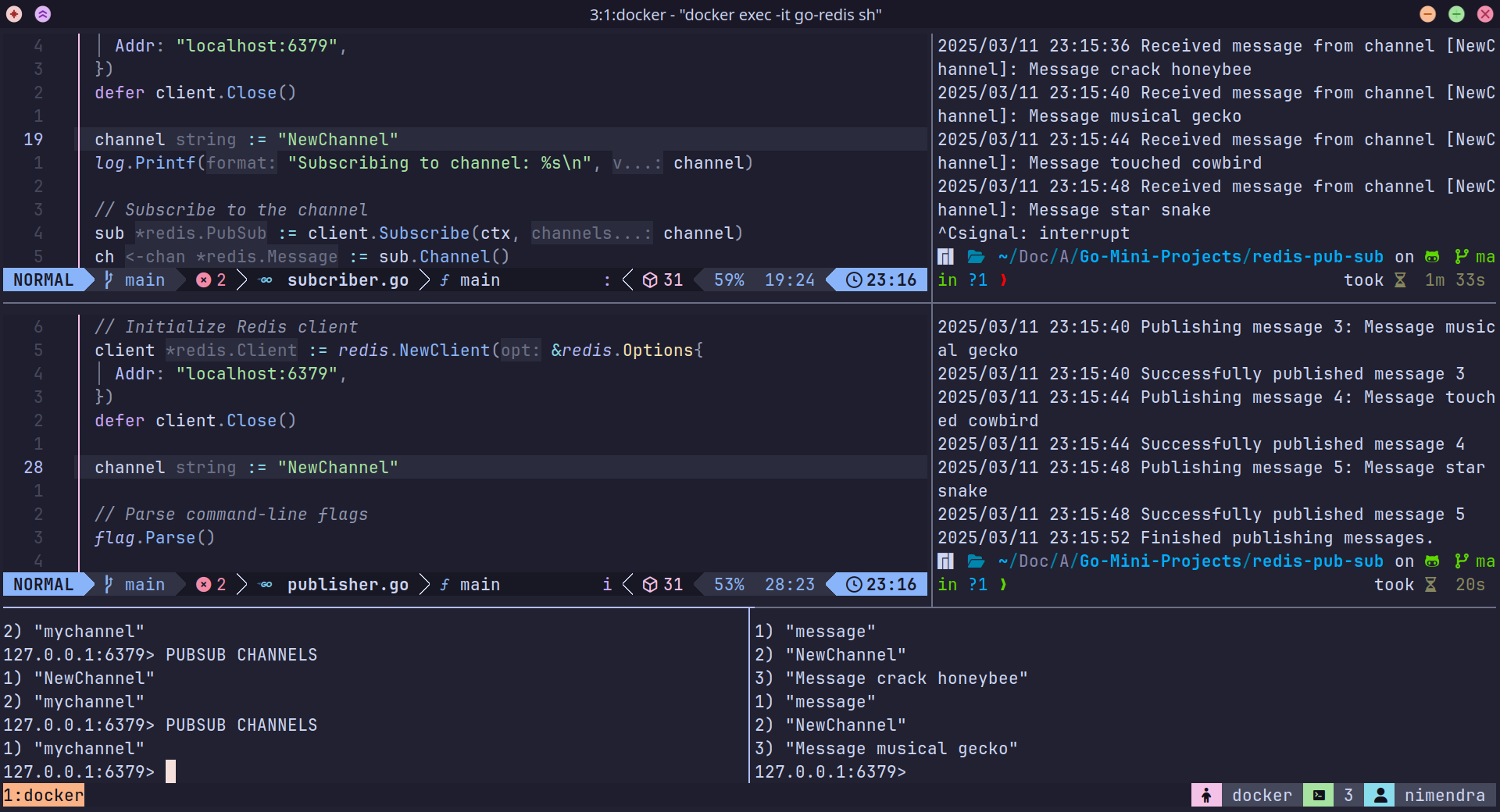Redis is often described as a data structure server. In addition to being a key-value store, Redis offers features such as caching (like Memcached), queues, and Pub/Sub messaging.
This article focuses on the Pub/Sub (publish-subscribe) pattern in Redis, how it works, its characteristics, and how to use it effectively with Go.
What is Redis Pub/Sub?
In Redis, a client can publish messages to a named channel, and other clients can subscribe to receive those messages from that channel.
Redis acts as a message broker — delivering published messages to all connected subscribers of that channel.
| |
Unlike message queues or Kafka-like systems, Redis Pub/Sub is synchronous and fire-and-forget. There is no persistence — if no subscriber is connected at the time of publishing, the message is lost.
Pub/Sub System Components
Redis Pub/Sub involves three key entities:
- Publisher: Sends messages to a named channel.
- Subscriber: Listens to one or more channels.
- Channel: The topic name used to route messages from publishers to subscribers.
Example: Think of it like a radio show (Publisher) broadcasting over a frequency (Channel). Listeners (Subscribers) must be tuned in at the same time to hear the message.
Types of Pub/Sub Systems
| Model | Description |
|---|---|
| Synchronous | Sender and receiver must be connected simultaneously. Redis Pub/Sub uses this. |
| Asynchronous | Messages are queued/persisted until receivers are available (e.g., Kafka). |
Redis Streams, Kafka, RabbitMQ support asynchronous message delivery by persisting messages.
Redis Pub/Sub with Go
Using the go-redis library, Redis Pub/Sub integrates cleanly with Go applications.
Subscriber Flow
Subscribe to a Redis channel:
0 1sub := client.Subscribe(ctx, "mychannel") ch := sub.Channel()Wait for messages on
ch(a Go channel):0 1 2for msg := range ch { fmt.Println("Received:", msg.Payload) }Redis keeps the connection open and pushes new messages as they arrive.
Publisher Flow
Publish a message:
0client.Publish(ctx, "mychannel", "Hello, Redis!")All subscribers connected to
"mychannel"receive the messageinstantly.
Example Code
Publisher.go
| |
Subscriber.go
| |

Summary
Redis Pub/Sub is a fast, lightweight, real-time messaging system suited for distributed applications that require low-latency communication without persistence.
However, for mission-critical systems needing durability, retries, and acknowledgments, consider message queues (like RabbitMQ) or streams (like Kafka or Redis Streams).
References
- Build Your Own Redis (CodeCrafters): codecrafters.io
- Redis Pub/Sub - Official Docs
- Redis Pub/Sub In-Depth (Medium)
- Go Redis Client - GitHub
- Publish/Subscribe Explanation - StackOverflow